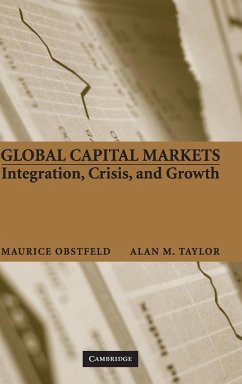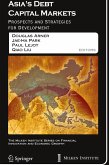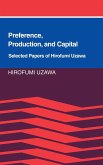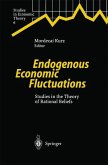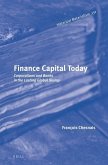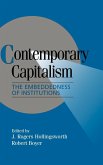Short description/annotation
An economic survey of international capital mobility from the late nineteenth century to the present.
Main description
This book presents an economic survey of international capital mobility from the late nineteenth century to the present. The authors examine the theory and empirical evidence surrounding the fall and rise of integration in the world market. A discussion of institutional developments focuses on capital controls and the pursuit of macroeconomic policy objectives in shifting monetary regimes. The Great Depression emerges as the key turning point in recent history of international capital markets, and offers important insights for contemporary policy debates. Its principal legacy is that today's return to a world of global capital is marked by great unevenness in outcomes regarding both risks and rewards of capital market integration. More than in the past, foreign investment flows largely from rich countries to other rich countries. Yet most financial crises afflict developing countries, with costs for everyone.
Table of contents:
Part I. Preamble; Section 1. Global Capital Markets: Overview and Origins: 1. Theoretical benefits; 2. Problems of supernational capital markets in practice; 3. The emergence of world capital markets; 4. The trilemma: capital mobility, the exchange rate, and monetary policy; Part II. Global Capital in Modern Historical Perspective; Section 2. Globalization in Capital Markets: Quantity Evidence: 5. The stocks of foreign capital; 6 The size of international flows; 7. The saving-investment relationship; 8. Caveats: quantity criteria; Section 3. Globalization in Capital Markets: Price Evidence: 9. Real interest rate convergence; 10. Exchange-risk free nominal interest parity; 11. Purchasing power parity; 12. Caveats: price criteria; 13. Summary; Part III. The Political Economy of Capital Mobility; Section 4. Globalization in Capital Markets: A Long-Run Narrative: 14. Capital without constraints: the gold standard, 1870-1931; 15. Crisis and compromise: depression and war, 1931-46; 16. Containment then collapse: Bretton Woods, 1946-71; 17. Crisis and compromise II: the floating era, 1971-99; 18. Measuring financial integration using data on legal restrictions; Section 5. The Trilemma in History: 19. Methodology; 20. Data sources; 21. Stationarity of nominal interest rates; 22. Empirical findings: pooled annual differences; 23. Empirical findings: individual-country dynamics; 24. Conclusion; Section 6. Sovereign Risk, Credibility and the Gold Standard: 25. Five suggestive cases; 26. Econometric analysis; 27. Conclusion; Part IV. Lessons for Today; Section 7. Uneven Rewards: 28. Foreign capital stocks: net versus gross; 29. Foreign capital flows: rich versus poor; 30. Foreign capital stocks: rich versus poor; 31. Then: has foreign capital always been biased to the rich(?)33;; 32. Now: have poor countries really liberalized their markets(?)33;; 33. Variations in the types of capital flows; 34. Summary; Section 8. Uneven Risks: 35. Open markets, crises and volatility; 36. Crises, controls and economic performance; 37. Contagion and self-fulfilling crises; 38. Market failure, government failure and policy choices.
An economic survey of international capital mobility from the late nineteenth century to the present.
Main description
This book presents an economic survey of international capital mobility from the late nineteenth century to the present. The authors examine the theory and empirical evidence surrounding the fall and rise of integration in the world market. A discussion of institutional developments focuses on capital controls and the pursuit of macroeconomic policy objectives in shifting monetary regimes. The Great Depression emerges as the key turning point in recent history of international capital markets, and offers important insights for contemporary policy debates. Its principal legacy is that today's return to a world of global capital is marked by great unevenness in outcomes regarding both risks and rewards of capital market integration. More than in the past, foreign investment flows largely from rich countries to other rich countries. Yet most financial crises afflict developing countries, with costs for everyone.
Table of contents:
Part I. Preamble; Section 1. Global Capital Markets: Overview and Origins: 1. Theoretical benefits; 2. Problems of supernational capital markets in practice; 3. The emergence of world capital markets; 4. The trilemma: capital mobility, the exchange rate, and monetary policy; Part II. Global Capital in Modern Historical Perspective; Section 2. Globalization in Capital Markets: Quantity Evidence: 5. The stocks of foreign capital; 6 The size of international flows; 7. The saving-investment relationship; 8. Caveats: quantity criteria; Section 3. Globalization in Capital Markets: Price Evidence: 9. Real interest rate convergence; 10. Exchange-risk free nominal interest parity; 11. Purchasing power parity; 12. Caveats: price criteria; 13. Summary; Part III. The Political Economy of Capital Mobility; Section 4. Globalization in Capital Markets: A Long-Run Narrative: 14. Capital without constraints: the gold standard, 1870-1931; 15. Crisis and compromise: depression and war, 1931-46; 16. Containment then collapse: Bretton Woods, 1946-71; 17. Crisis and compromise II: the floating era, 1971-99; 18. Measuring financial integration using data on legal restrictions; Section 5. The Trilemma in History: 19. Methodology; 20. Data sources; 21. Stationarity of nominal interest rates; 22. Empirical findings: pooled annual differences; 23. Empirical findings: individual-country dynamics; 24. Conclusion; Section 6. Sovereign Risk, Credibility and the Gold Standard: 25. Five suggestive cases; 26. Econometric analysis; 27. Conclusion; Part IV. Lessons for Today; Section 7. Uneven Rewards: 28. Foreign capital stocks: net versus gross; 29. Foreign capital flows: rich versus poor; 30. Foreign capital stocks: rich versus poor; 31. Then: has foreign capital always been biased to the rich(?)33;; 32. Now: have poor countries really liberalized their markets(?)33;; 33. Variations in the types of capital flows; 34. Summary; Section 8. Uneven Risks: 35. Open markets, crises and volatility; 36. Crises, controls and economic performance; 37. Contagion and self-fulfilling crises; 38. Market failure, government failure and policy choices.

